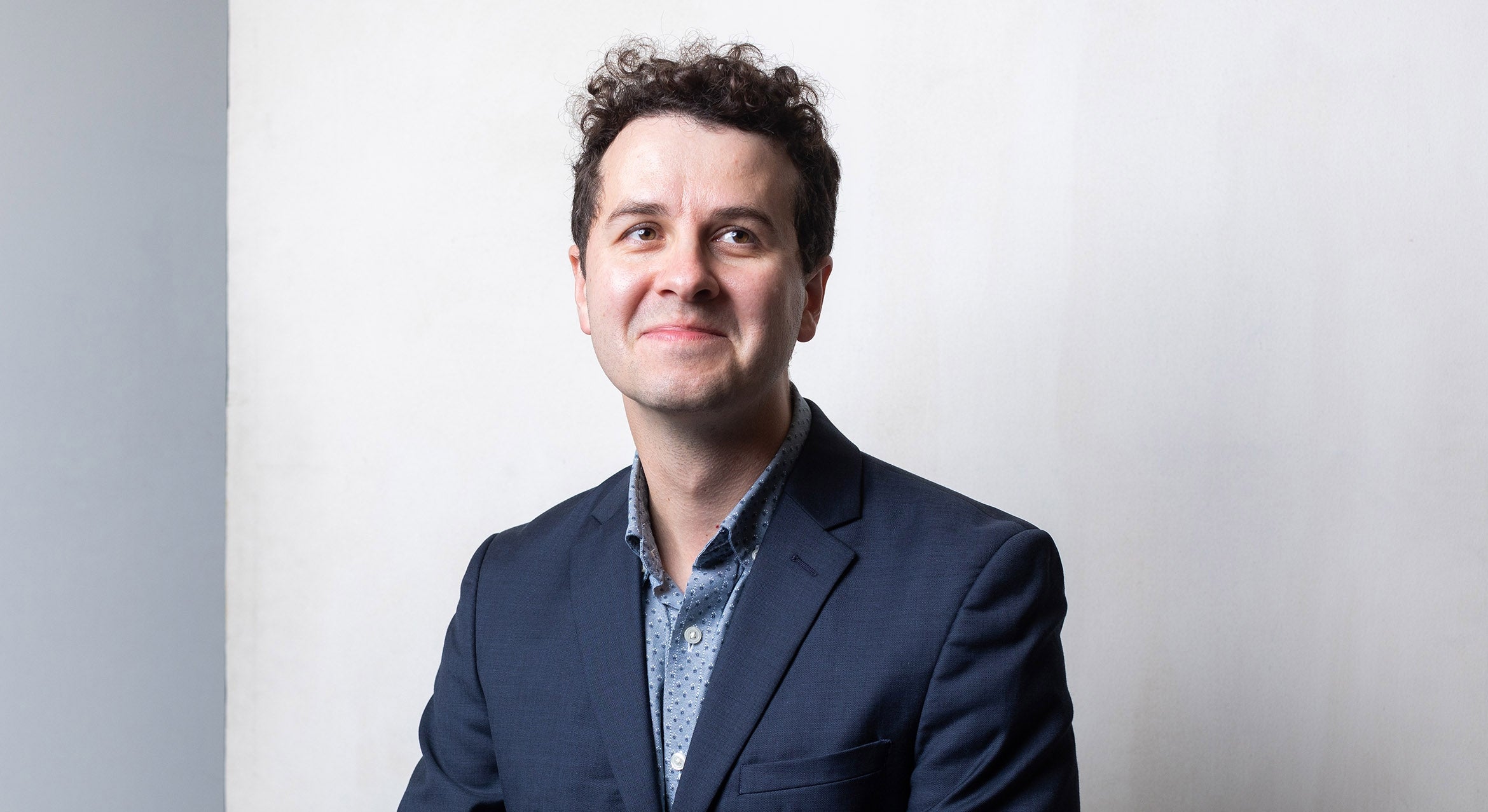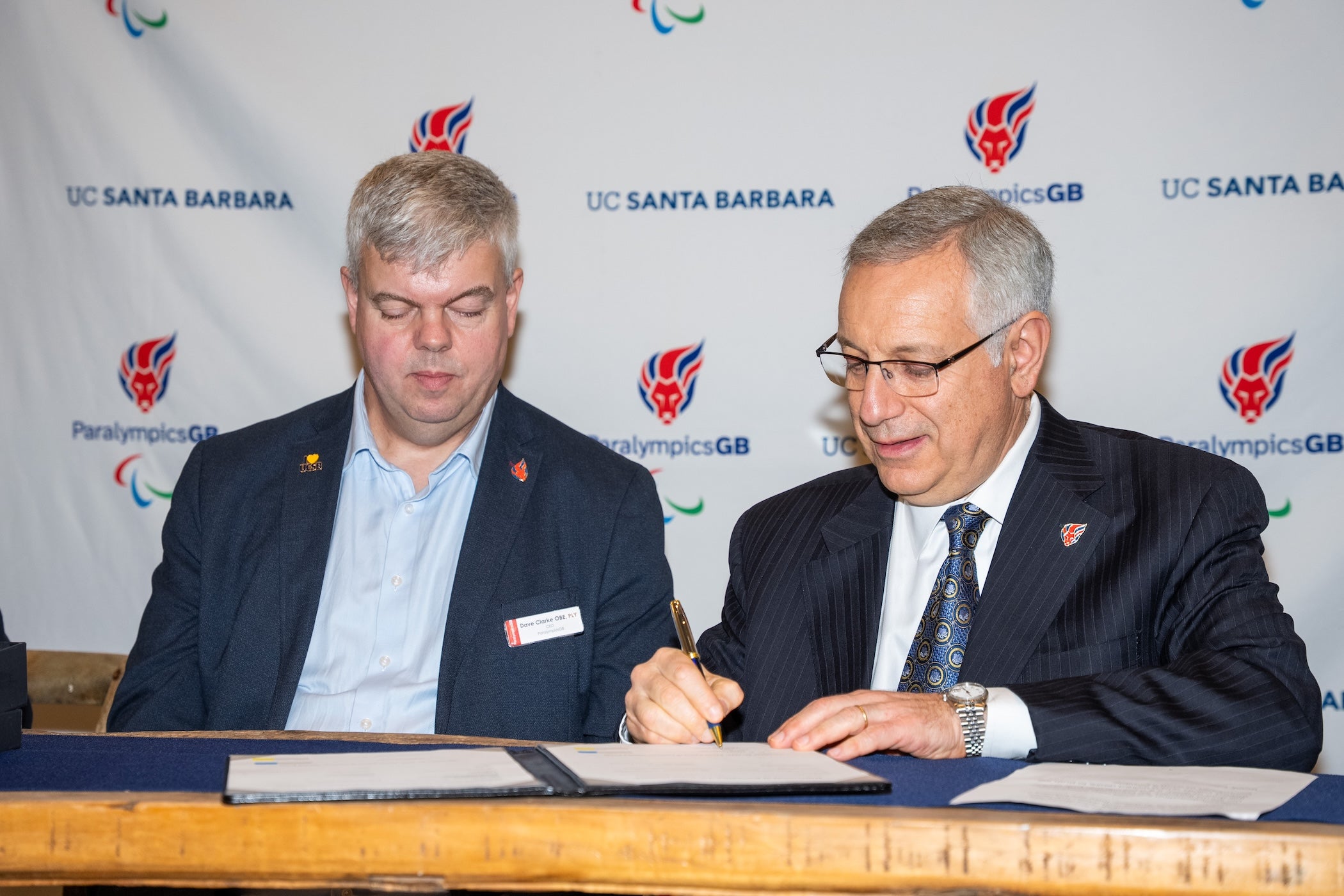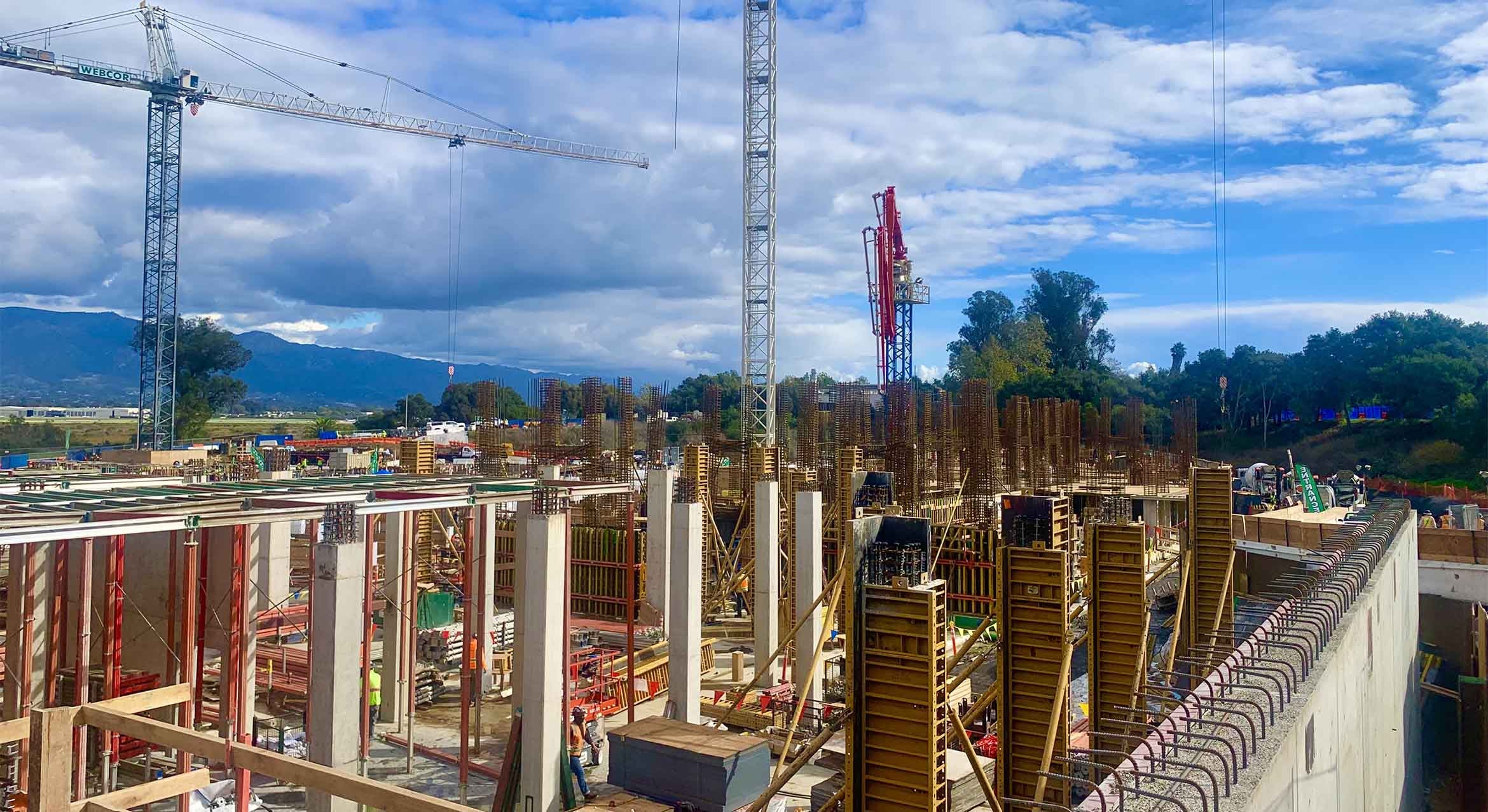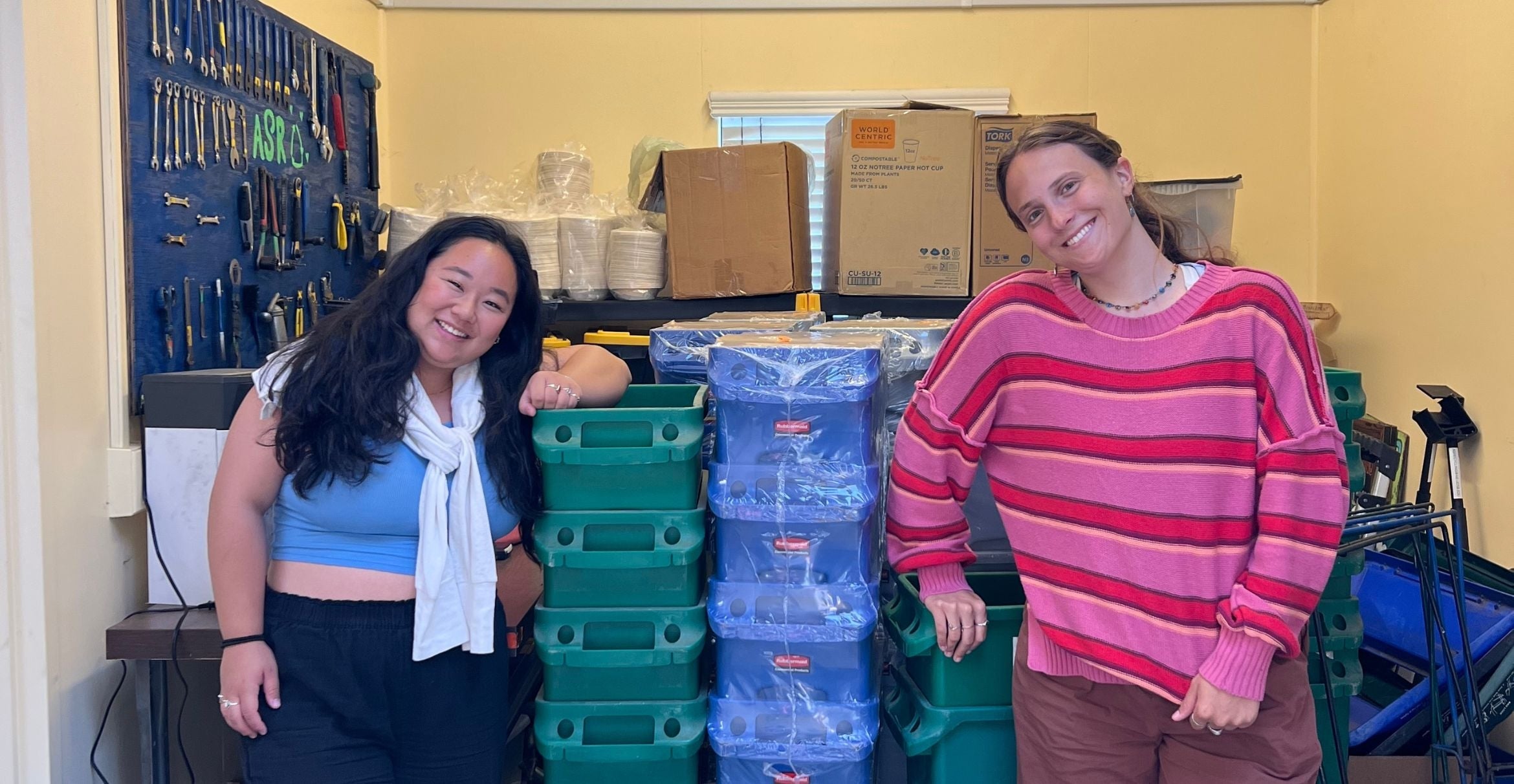
Adding to a run of student-led recycling programs at UC Santa Barbara, fourth-year undergraduate students Kaili Mikami and Lauren Buyalos are helping combat the rising tide of discarded plastics in research laboratories.
Their project, FLOW (Facilitating Laboratory Optimization & Waste), brings together campuswide and community partners — including UCSB Facilities Management, Environmental Health & Safety, Associated Students (AS) Recycling, Surplus Sales and local waste management and nonprofit organizations — to keep non-recyclable, single-use plastics from ending up in Tajiguas Landfill, the coastal trash dump for Santa Barbara County. FLOW joins recent on-campus recycling initiatives targeting shoes, sports equipment and single-use lab gloves.
Mikami (environmental studies) and Buyalos (aquatic biology) launched FLOW through the Environmental Leadership Incubator (ELI), a nine-month mentorship program for undergraduates to develop hands-on leadership skills to pinpoint environmental concerns and implement solutions. Erika Zollett, the executive director of the Greti U. Croft Center for Undergraduate Environmental Leadership, served as their faculty mentor.
During their ELI sleuthing, Mikami and Buyalos discovered that plastic items smaller than six inches are nonrecyclable across Santa Barbara County, regardless of plastic number.
“At Tajiguas Landfill, trash and recyclables are sorted mechanically by size and weight,” Buyalos said. “Items under six inches, like many lab plastics, or even your yogurt cup, end up in the landfill.”
Addressing this problem required out-of-the-box thinking and follow-through, Buyalos added. “We helped UCSB establish a partnership with Art From Scrap, a reuse store run by the Explore Ecology nonprofit group in Santa Barbara. Art From Scrap gives UCSB’s single-use lab plastics a second life by repurposing them as art supplies for local schools, artists and community programs.”
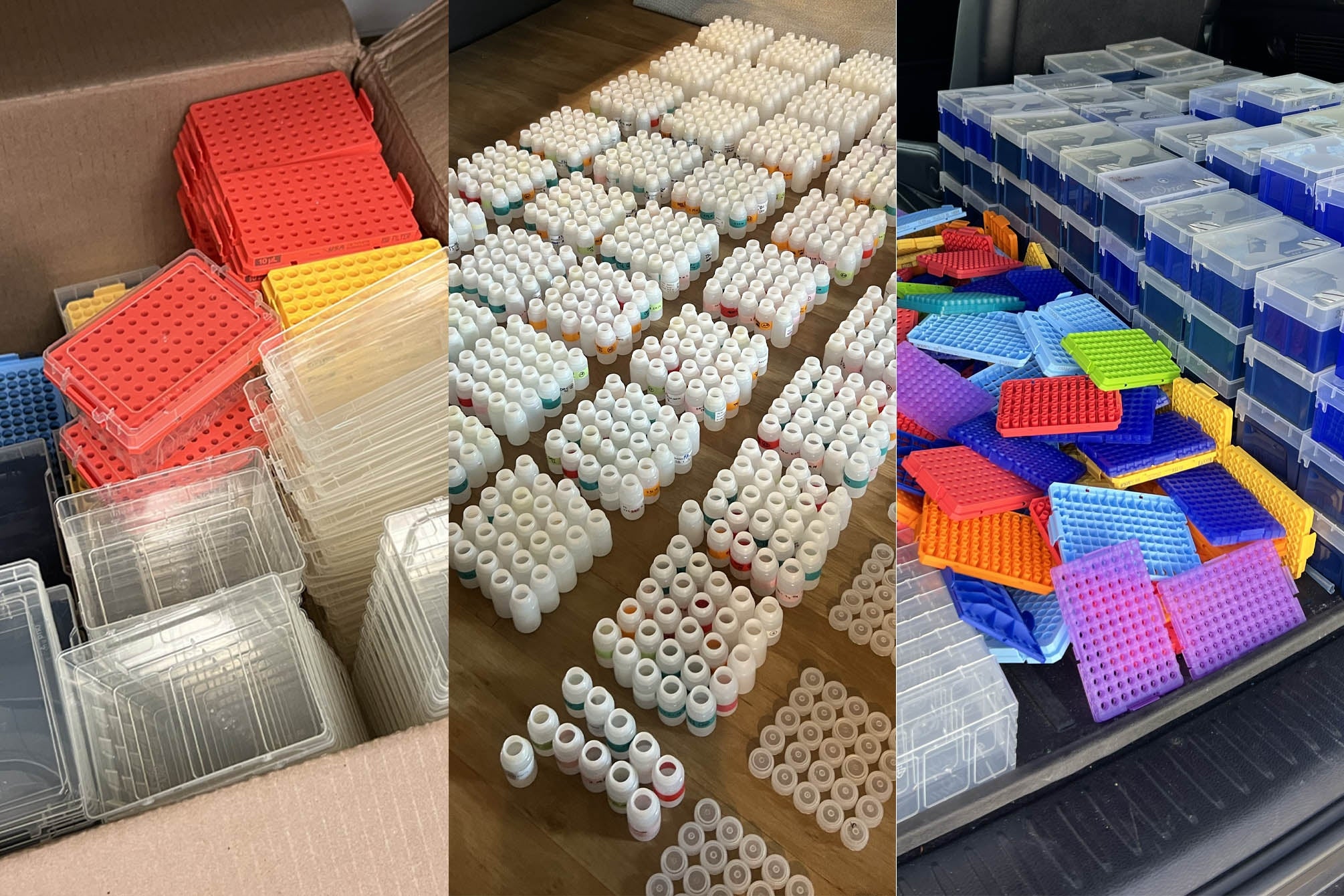
Mikami and Buyalos also noticed a scarcity of recycling receptacles and guidelines in labs across campus.
“As we explored lab spaces, a common recurrence was that many labs did not have any recycling bins,” Mikami said. “So even when researchers wanted to recycle, they simply didn’t have the infrastructure. And in labs where bins were present, there was no signage.”
Their solution? More bins and signage. Drumming up on-campus financial support from Facilities Management, UCRA (Undergraduate Research & Creative Activities) and TGIF (The Green Initiative Fund), they secured and distributed more than three dozen recycling and trash bins and, in collaboration with AS Recycling and approval from an array of campus and county agencies, created lab-specific recycling signage in English, Spanish and Mandarin. Currently installed in six lab buildings, these signs are slated to roll out to labs throughout campus.
“Lauren and Kaili have brought to fruition a very impactful project,” said oceanographer Elisa Halewood, manager of the Carlson Microbial Oceanography Lab. “By developing signage for a variety of commonly used lab consumables, they are making sure no one hesitates to put items in the right place. The result is immediate and momentum is growing.”
“We aim to procure lab supplies with a lower environmental impact, but that effort is diminished if those items end up in the landfill,” added Jen Bowser, FLOW project mentor and manager of UCSB’s Sustainable Procurement Program. “Because disposal standards vary by county, educating researchers on our campus-specific waste practices is essential. I’m so proud of Kaili and Lauren for developing real solutions through improved recycling signage and community partnerships to ensure non-hazardous lab waste is disposed of properly.”
They also set up a new lab recycling webpage on the AS Recycling website, featuring FAQs and a product guide, among many details.
“We never expected this project to grow so much or to fill such an essential gap in lab waste management,” Mikami said. “So many researchers, faculty and staff have expressed support and appreciation for the program, and we can’t wait to see the project’s long term impact on the UCSB community.”
Keith Hamm
Social Sciences, Humanities & Fine Arts Writer
(805) 893-2191
keithhamm@ucsb.edu

